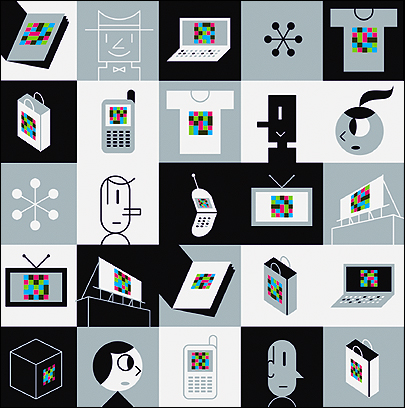Apr 01, 2007Phillip Nelson, a computer science major at Cornell University, has created an RFID system, dubbed Subni, designed to help the visually impaired navigate their environment. When a person carrying a handheld RFID reader nears an object tagged with a passive, high-frequency tag, the reader scans the tag and communicates the tag's unique ID number to a nearby Microsoft Pocket PC. Then client software, called SoundTag, correlates the tag with information, and a voice synthesizer translates that information into audible sounds.
As Cornell plans to test the system—300 objects around its campus have been tagged—Nelson is pushing Subni to the next frontier: the Internet. His dream is to create a Web-based social network that lets people input and access information about objects, places and even people.

The system uses RFID technology, wireless Bluetooth communications, a Microsoft Pocket PC, a Web site (www.subni.com) and a back-end database. Nelson invites anyone interested to create a free account, affix HF tags based on the ISO 15693 standard for 13.56 MHz transponders to objects in their environment and then enter each tag's unique ID number and any related information about the object into a secure database.
When someone subscribes to the Subni Web service, a Subni software client is downloaded to their Pocket PC, which communicates with both Subni's servers (via the Internet) and the subscriber's ISO 15693-compliant RFID reader (via Bluetooth), which can be used to scan the tags. The information about the object appears on the Pocket PC. Every read is recorded on the Subni Web site, in each user's personal pages, which can be shared with others.
The information available depends on what was entered by the subscriber who tagged the item. It could be a description of a building, or someone could tag a business card and associate the tag with the company's URL. Or a subscriber could affix a tag to the menu board hanging outside her favorite restaurant, scan the tag and include links to the restaurant's Web site, an entry on her blog about her most recent dining experience there and a review in the local newspaper. Another subscriber could visit the restaurant, scan the tag and instantly access all the information. He could even add his opinion of the restaurant.
While Subni requires the participation of many people to be of any real use, Nelson points to the success of Wikipedia, the free online encyclopedia written collaboratively by volunteers and run by a nonprofit organization. "Wikipedia proves that people are willing to share information and do something like this," he says. "Subni's system is transparent, so privacy controls and the data are in the hands of the users. Subni RFID shifts the power of RFID to the people. I believe this is necessary for consumers and end users to begin embracing the usefulness of RFID technology."
